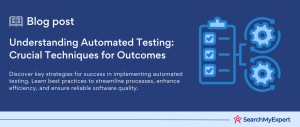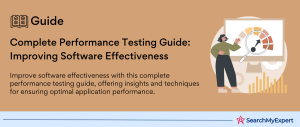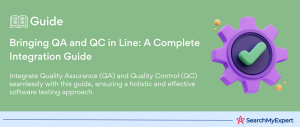The Essential Guide to Testing APIs and Web Services for Optimal Performance
In the digital age, where software applications and systems are interconnected through the web, the importance of APIs (Application Programming Interfaces) and web services in facilitating these connections cannot be overstressed. These technologies serve as the backbone of modern web and mobile applications, enabling different software systems to communicate and share data seamlessly. However, with great power comes great responsibility. The reliability and functionality of APIs and web services are pivotal to the overall performance and user experience of the applications that depend on them. Therefore, testing these interfaces is not just a best practice but a necessity to ensure that applications run smoothly and efficiently.
Understanding APIs and Web Services
At their core, APIs and web services are mechanisms that allow different software applications to talk to each other. They can be seen as contracts of service between different software components, where one application requests data or functionality from another application, and the service is delivered through a set of predefined rules and protocols. While these terms are often used interchangeably, they cater to a broad spectrum of needs and come in various formats, each with its unique set of rules and use cases.
- REST (Representational State Transfer):
RESTful APIs are arguably the most popular type of API. They use HTTP requests to GET, PUT, POST, and DELETE data. REST is known for its simplicity and statelessness, making it an ideal choice for web services that require scalability and performance. - SOAP (Simple Object Access Protocol):
Unlike REST, SOAP APIs are protocol-based and use XML messages for data exchange. They are known for their high security and transactional reliability, making them suitable for enterprise-level applications where data integrity is crucial. - GraphQL:
A relatively newer player in the API field, GraphQL offers a more flexible approach to data retrieval. Instead of multiple requests to different endpoints to fetch related data, GraphQL allows clients to request exactly the data they need from a single endpoint, reducing the amount of data transferred over the network and improving performance.
Delving Deeper into API/Web Service Comprehension
For developers and QA professionals, understanding the intricacies of the target API or web service is a critical first step in the testing process. This deep dive not only illuminates the API’s purpose and functionality but also sets the stage for a comprehensive testing strategy. Here’s how you can thoroughly grasp the essence of the API or web service you are about to test.
Purpose and Functionality
The core objective of any API or web service is to facilitate data exchange and functionality sharing between different software entities. Whether it’s a RESTful service providing access to a database of user information, a SOAP API handling secure financial transactions, or a GraphQL endpoint allowing for optimized data fetching, the primary purpose is to enable seamless integration and interaction between disparate systems. Understanding the specific functionality—whether it’s retrieving data, performing calculations, or updating records—is crucial for developing effective test cases.
Documentation, Endpoints, and Data Formats
Documentation is the roadmap to comprehending an API’s capabilities and limitations. It should detail everything from authentication methods to rate limiting, providing a comprehensive guide on how to effectively interact with the API. Look for documentation that includes:
- Overview of the API:
High-level description and use cases. - Authentication:
Methods required to securely access the API. - Endpoint descriptions:
Detailed explanations of each endpoint, including HTTP methods (GET, POST, PUT, DELETE), required and optional parameters, and error codes. - Examples:
Practical examples of requests and responses.
Endpoints are specific paths or URLs that allow access to different functions of the web service. Each endpoint has a defined HTTP method and a response format, dictating how clients should request data or perform actions.
Data Formats play a significant role in how information is exchanged. JSON (JavaScript Object Notation) and XML (eXtensible Markup Language) are the most common formats for REST and SOAP APIs, respectively. GraphQL, on the other hand, allows clients to define the structure of the response data, making it more flexible but also requiring a deeper understanding of the available data schema.
Key Success Criteria and Expected Behaviors
Defining what success looks like is essential for any testing endeavor. For API and web service testing, this involves setting clear success criteria and understanding the expected behaviors of the system under test. These criteria could include:
- Response Time: How quickly the API responds to a request under various load conditions.
- Accuracy of Data: Ensuring the API returns the correct data as per the request parameters.
- Error Handling: Properly formatted error messages should be returned for invalid requests.
- Security and Authorization:
Requests should be authenticated and authorized appropriately, with sensitive data handled securely.
Strategizing API/Web Service Testing: Methodologies and Tools
Once you’re well-acquainted with the API or web service you’re dealing with, the next crucial step is to select the right testing approaches. The landscape of API testing is vast, encompassing various methodologies each designed to uncover specific types of issues. Coupled with the right tools, these methodologies form a comprehensive testing strategy tailored to your project’s needs.
Testing Methodologies
Functional Testing: This is the cornerstone of API testing, focusing on verifying that the API behaves as expected. Functional tests validate the API’s responses to various inputs, ensuring it meets the specified requirements and handles errors gracefully.
Performance Testing: Essential for ensuring your API can handle the load, performance testing assesses how the system performs under various conditions. This includes load testing, stress testing, and spike testing to identify bottlenecks and scalability issues.
Security Testing: Given the critical nature of data exchange, security testing is paramount. This involves testing for vulnerabilities such as SQL injection, XSS (Cross-Site Scripting), and ensuring that authentication, encryption, and access controls are robust.
Compatibility Testing: Ensures that the API works across different devices, operating systems, and network environments. This is particularly important for APIs that serve a wide range of clients.
Integration Testing: Focuses on how well the API integrates with other parts of the system, including external services and data sources. This ensures that the entire system functions harmoniously.
Common Testing Tools
Postman: A popular choice for RESTful APIs, Postman offers a user-friendly interface for sending requests, creating test suites, and automating tests. Its ability to save environments and variables makes it ideal for both manual and automated testing.
SoapUI: Geared towards SOAP and REST APIs, SoapUI allows for comprehensive testing, including functional, performance, and security testing. Its strong suit is in handling complex SOAP-based services, offering advanced features like assertion scripting and load testing.
Automation Frameworks: Tools like Rest-Assured, JMeter, and Selenium (for browser-based API interactions) enable automated testing, which is crucial for continuous integration and delivery pipelines. These frameworks allow tests to be scripted and executed as part of the build process, ensuring that any regressions are caught early.
Selection Criteria
Choosing the right testing methodologies and tools depends on several factors:
- API Type:
The nature of the API (REST, SOAP, GraphQL) can dictate the choice of tools. For example, Postman and SoapUI are versatile options for REST and SOAP, while specialized tools might be required for GraphQL. - Complexity:
The complexity of the API’s functionality and data structures will influence the depth and breadth of testing needed. Complex APIs might require more sophisticated scripting and automation to thoroughly test. - Project Needs: Consider the project’s specific requirements, such as the need for rapid development cycles, which would benefit from automated testing and continuous integration. Security-sensitive applications, on the other hand, would necessitate a heavier focus on security testing.
- Resource Availability:
The expertise of your team and the resources (time and budget) available for testing should also guide your choice. Tools that offer ease of use and community support can be particularly beneficial for teams new to API testing.
Navigating Through Test Execution and Result Analysis for APIs/Web Services
Executing tests and analyzing the outcomes form the crux of the API/web service testing process. This phase not only reveals the robustness of your API but also uncovers areas needing refinement. Utilizing effective tools, understanding how to evaluate test outcomes, and employing strategies for comprehensive logging and reporting are key to this stage. Let’s explore these elements in detail.
Executing Tests Using Tools
Postman and SoapUI are among the most popular tools for executing API tests, thanks to their user-friendly interfaces and extensive feature sets. Here’s how you can use these tools for test execution:
With Postman:
- Create a Collection:
Organize your API requests into collections for easier management. - Set Environment Variables:
Define variables for different testing environments, such as staging or production. - Send Requests:
Use the built-in HTTP request functionality to send API requests, varying parameters and body content as needed for your test cases. - Use Test Scripts:
Postman allows you to write scripts for test assertions to automatically check response codes, response times, and body content. - Automate with Runner: Utilize Postman’s Collection Runner to execute a series of requests automatically and view aggregated results.
With SoapUI:
- Create a New Project: Import your WSDL for SOAP services or Swagger/OpenAPI specification for REST APIs.
- Configure Test Cases:
Design test cases within your project, specifying request parameters and expected responses. - Assert Conditions:
Use SoapUI’s assertion feature to validate response data against expected outcomes automatically. - Run Load Tests:
Beyond functional testing, SoapUI offers load testing features to simulate high traffic and analyze performance under stress.
Evaluating Test Outcomes
After executing your tests, it’s crucial to meticulously review the results. This involves:
- Analyzing Successes and Failures:
Identify which tests passed or failed. Successful tests confirm expected behavior, while failures may indicate bugs, unhandled conditions, or misunderstandings about the API’s intended functionality. - Reviewing Error Messages:
For failed tests, examine error messages and status codes to diagnose issues. Well-designed APIs should return informative errors that help pinpoint the problem. - Performance Metrics:
Evaluate response times and throughput rates in performance testing to check if they meet your application’s requirements.
Techniques for Logging, Reporting, and Debugging
- Logging: Implement detailed logging in your testing framework to capture requests and responses. Tools like Postman and SoapUI offer built-in logging, but for automated frameworks, you may need to configure logging manually. Ensure logs are structured and searchable for easier analysis.
- Reporting:
Utilize the reporting features of your testing tool to generate summaries of your test executions. These reports should highlight pass/fail rates, performance metrics, and potentially problematic areas. Both Postman and SoapUI provide reporting capabilities, and automated testing frameworks often integrate with CI/CD tools to produce reports as part of the build process. - Debugging:
When encountering failures, use a systematic approach to debugging:
- Isolate the Issue:
Narrow down the problem by varying request parameters or simplifying the request body. - Consult Logs:
Refer to detailed logs for clues about what went wrong. - Compare with Documentation:
Ensure that the request matches the documented expectations for the API. - Use Proxy Tools: Tools like Charles or Fiddler can intercept and log HTTP traffic, providing insights into the request/response cycle.
Elevating API/Web Service Testing with Advanced Techniques
To ensure APIs and web services not only meet their functional requirements but also deliver robust performance, security, and reliability, advanced testing techniques become indispensable. Let’s explore the realms of load testing, security testing, API contract testing, and the utilization of mocking and virtualization tools to simulate and assess complex scenarios.
Load Testing
Load testing is crucial for evaluating how your API performs under heavy traffic conditions. It helps identify bottlenecks, ensuring that the API can handle peak loads without degradation in response times or functionality.
- Tools:
JMeter and LoadRunner are popular choices for simulating high numbers of concurrent users making requests to your API. These tools offer extensive customization options for mimicking real-world usage patterns and analyzing performance metrics. - Methodology:
Begin with baseline testing to establish normal performance metrics. Gradually increase the load to observe how the system behaves, identifying at what point performance starts to degrade.
Security Testing
With APIs often accessing sensitive data, security testing is paramount to identify vulnerabilities and ensure data protection.
- Tools:
OWASP ZAP and Burp Suite are comprehensive security testing tools that can help uncover vulnerabilities such as SQL injection, CSRF (Cross-Site Request Forgery), and XSS (Cross-Site Scripting). Automated security scanners specifically designed for APIs, like Postman’s built-in security checks, can also be used. - Methodology:
Employ a combination of automated scanning and manual testing techniques. Consider the OWASP Top 10 specific to APIs as a guideline for common vulnerabilities to test against.
API Contract Testing
API contract testing ensures that the API meets its specifications, providing a way to verify that the API’s implementation matches its documentation.
- Tools: Dredd and Postman can be used to automate contract testing. These tools compare the actual responses from the API against the expected responses defined in the API specification, such as OpenAPI (formerly Swagger) or RAML.
- Methodology:
Define the expected responses and status codes for various requests in your API specification. Automated tools can then validate the live API responses against these expectations, ensuring consistency and adherence to the contract.
Performance Analysis
Beyond load testing, performance analysis involves a deeper dive into the API’s behavior under stress, examining aspects like response times, throughput, and resource utilization.
- Tools:
New Relic and Grafana offer insights into real-time performance data, allowing teams to monitor API metrics and identify trends or anomalies over time. - Methodologies:
Use APM (Application Performance Management) tools to continuously monitor API performance. Analyze long-term trends and perform root cause analysis on any identified issues.
Vulnerability Assessments
Vulnerability assessments are systematic examinations of the API for security weaknesses, crucial for preempting potential exploits.
- Tools: Static application security testing (SAST) tools like SonarQube can analyze source code for vulnerabilities, while dynamic application security testing (DAST) tools assess the running application.
- Methodologies:
Incorporate regular scans into your CI/CD pipeline. Prioritize and remediate identified vulnerabilities based on their severity and potential impact.
Ensuring Excellence in API/Web Service Delivery: A Comprehensive Conclusion
As we conclude this deep dive into the realm of API and web service testing, the paramount importance of integrating continuous testing and development workflows stands out. This integration not only elevates the quality of software applications but also ensures their reliability, performance, and security in the face of evolving user expectations and technological advancements.
The Essence of Continuous Testing and Integration
Continuous testing is the backbone of a robust development lifecycle, allowing for the early detection of issues and facilitating swift corrections. Integrating testing into the CI/CD pipeline ensures that every change is automatically tested, making the deployment process faster and more reliable. This approach minimizes downtime and improves the user experience by ensuring that new features are both functional and secure upon release.
Key Takeaways and Benefits
- Thorough Testing Ensures Reliability:
Regular and comprehensive testing of APIs and web services guarantees that systems work as expected under various scenarios, fostering trust among end-users. - Performance Optimization:
By identifying bottlenecks and performance issues early, organizations can ensure that their applications meet the desired speed and efficiency standards. - Security Assurance:
In an era where data breaches are costly, rigorous security testing protects sensitive information, safeguarding both the users and the reputation of the organization. - Improved User Satisfaction: A well-tested API is more likely to provide a seamless, bug-free user experience, leading to higher satisfaction and retention rates.
Best Practices for Enhancing Testing Processes
- Adopt a Shift-Left Testing Approach:
Begin testing early in the development cycle. This helps in identifying and fixing issues before they escalate, saving time and resources. - Automate Where Possible:
Automate repetitive and labor-intensive testing tasks. This not only speeds up the process but also reduces the likelihood of human error. - Utilize Realistic Testing Environments: Mimic production environments as closely as possible during testing to uncover issues that may not be apparent in a less realistic setup.
- Foster a Culture of Quality:
Encourage every member of the development team to take responsibility for quality assurance. Quality is not just the QA team’s responsibility; it’s a collective goal. - Keep Documentation Updated:
Ensure that API documentation is always current and comprehensive. Accurate documentation is crucial for effective testing and for developers who will use the API. - Regularly Review and Refine Testing Strategies:
As technologies and business requirements evolve, so should your testing strategies. Regular reviews can help identify areas for improvement. - Leverage Metrics and Feedback:
Use testing metrics and feedback from users to guide future testing efforts. Understanding how users interact with your application can reveal unexpected areas of focus.
Conclusion
As we wrap up this comprehensive guide on API and web service testing, it’s clear that the key to delivering high-quality, reliable, and secure digital services lies in the adoption of thorough testing practices. By integrating continuous testing and development workflows, leveraging the latest tools and methodologies, and adhering to best practices, teams can significantly enhance the performance and security of their APIs and web services. This not only ensures a seamless and satisfying user experience but also positions organizations for success in the fast-paced digital arena. Embrace these strategies to maintain and improve your testing processes, and watch as your digital solutions thrive in efficiency and excellence.
Empower your development lifecycle with Software Testing Service Companies.
Table of Contents
Toggle






